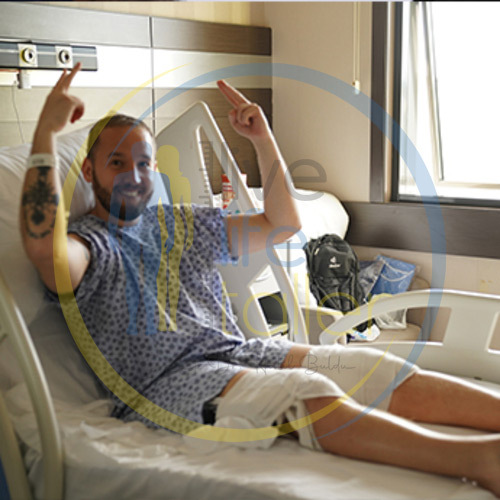Limb extension surgery, also known as limb lengthening surgery or limb enlargement surgery, is a procedure designed to help individuals increase their height. This surgical technique involves cutting the bone and gradually lengthening it over time. A device is used to separate the bone segments slowly, allowing new bone tissue to grow. The treatment requires a well-monitored recovery period to ensure successful outcomes.Recovery time varies depending on factors such as the type of surgery, the patient’s overall health, and adherence to post-surgical care. In this article, we will explore the treatment process, recovery expectations, and how factors like surgery type impact limb lengthening surgery recovery time.
Table of Contents
ToggleHow Does the Limb Lengthening Process Proceed?
The process of limb lengthening surgery consists of two main phases: the surgical phase and the lengthening phase. Initially, the surgeon cuts the bone and applies an external or internal fixation device to the bone. This device allows gradual separation of the bone segments, which encourages new bone to grow in the gap. The lengthening process occurs at a rate of approximately 1 millimeter per day, based on the patient’s specific plan.During this period, the bone is carefully monitored to ensure proper growth and alignment. The patient will be responsible for adjusting the device as instructed by their surgeon. After the desired length is achieved, the bone requires a consolidation period to harden and stabilize. It’s crucial for patients to understand that leg lengthening surgery is a long-term process that can take several months to complete.
What to Expect in the Recovery Process?
Recovery from limb lengthening surgery is a gradual journey that varies from patient to patient. After surgery, patients typically stay in the hospital for a few days for initial monitoring. The overall limb lengthening surgery recovery time can range from several months to a year, depending on individual factors and the extent of the lengthening performed.During the recovery period, patients need to participate in a rehabilitation program that includes physical therapy to rebuild muscle strength and maintain joint flexibility. Mobility aids, such as crutches, are often necessary early in the recovery phase. Full healing, including the hardening of new bone tissue, can take 6 to 12 months, with follow-up visits to monitor progress.
What are the Factors Affecting Limb Lengthening Success?
Several factors contribute to the success of limb lengthening surgery. The patient’s overall health, age, and compliance with post-surgery care all play a role in how well the body heals. Younger patients generally experience faster bone regeneration, which can shorten the overall leg lengthening surgery recovery time.The length of bone that is being extended also affects recovery. Larger amounts of lengthening can increase the risk of complications and extend recovery time. Moreover, proper adherence to physical therapy is essential to maintaining joint mobility and preventing stiffness during the lengthening process.
How Does the Treatment Plan Change According to Limb Lengthening Types?
There are different types of limb extension surgery, each tailored to the patient’s needs and goals. Whether the surgery is for cosmetic purposes or medical reasons, the treatment and recovery plans are adjusted accordingly to ensure the best possible outcome.
Cosmetic Limb Lengthening Treatment Plan
For those undergoing height growth surgery for cosmetic reasons, the treatment plan focuses on achieving a balanced and proportionate appearance. The lengthening process tends to be more gradual, allowing the body time to adjust to its new dimensions. This can extend the height surgery recovery time, as the focus is on minimizing risks while maximizing aesthetic results.
Medical Limb Extension Treatment Plan
In medical cases, such as correcting a leg length discrepancy or treating bone deformities, the approach is different. Leg lengthening surgery for medical reasons involves a more specialized treatment plan, as it may address functional issues rather than just aesthetics. Patients may require more extensive monitoring and rehabilitation, and their height surgery recovery time may be longer due to the complexity of their condition.Dispute Resolution Treatment Plan
Occasionally, complications can arise during the limb lengthening surgery process. These may include slow bone growth, infection, or issues with the fixation device. In such cases, the treatment plan will need to be modified to resolve these issues. The surgeon will create a tailored approach to address complications and ensure a successful outcome without compromising the final results.
What Support Services are Available During the Recovery Process?
The recovery process for limb lengthening surgery requires both physical and emotional support. Many clinics offer services designed to help patients through their healing journey, including physical therapy, pain management, and psychological support to address the emotional challenges that may arise.
Physical therapists play a key role in recovery by helping patients regain strength and mobility in their limbs. Additionally, psychological counseling is available for those who may experience emotional difficulties during the recovery process. These support services are critical to reducing the overall height surgery recovery time and ensuring a smooth rehabilitation process.


